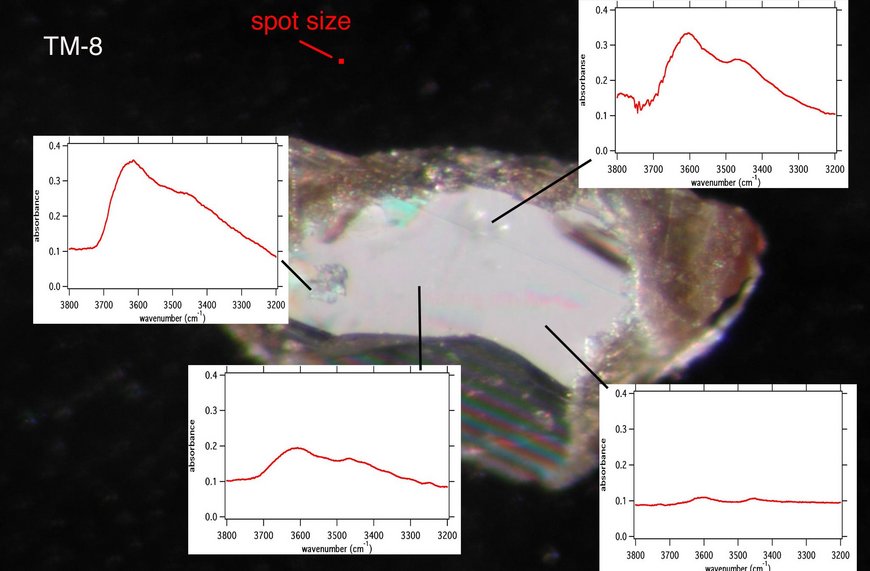
The presence of water in the earth's crust and mantle has enormous effects on geodynamic processes, because the incorporated hydrogen changes the physical properties of the minerals such as the melting point, rheological behavior (hydrolytical weakening) and the transformation kinetics. Besides in nominally hydrous minerals such as amphibole, serpentine and talc, hydrogen may be stored in nominally anhydrous minerals (NAMs) such as coesite, pyroxene, garnet and olivine. The hydrogen in these minerals is structurally bound as point defects. An appropriate method for detecting traces of hydrogen in minerals is IR spectroscopy. However, Transmission electron microscope analyses of olivine (Khisina et al., 2001) and clinopyroxene (Koch-Müller et al., 2004) showed that the presence of nm-sized hydrous phase inclusions might influence the IR-spectra. Consequently, the amount of hydrogen solved in the crystal structure will be overestimated. Therefore, for correct interpretation of IR-spectra knowledge of the microstructure of the investigated grains is required.
Currently we investigate the incorporation mechanism and solubility of hydrogen into the following nominally anhydrous minerals:
olivine, pyroxene, garnet, kyanite, coesite, stishovite.
We apply transmission electron microscopy to check for nm-sized inclusions. To get insight into the location of hydrogen in the structure we apply linear polarized conventional as well as synchrotron IR radiation (Bessy II) at ambient condition and in-situ as a function of pressure and/or temperature.



